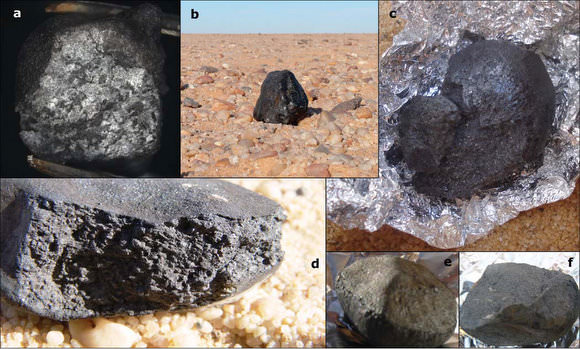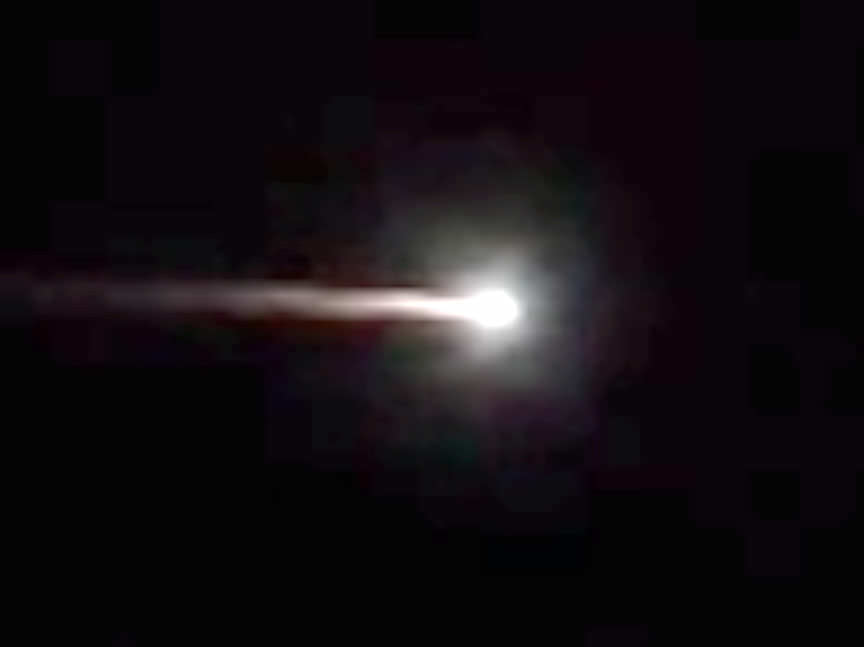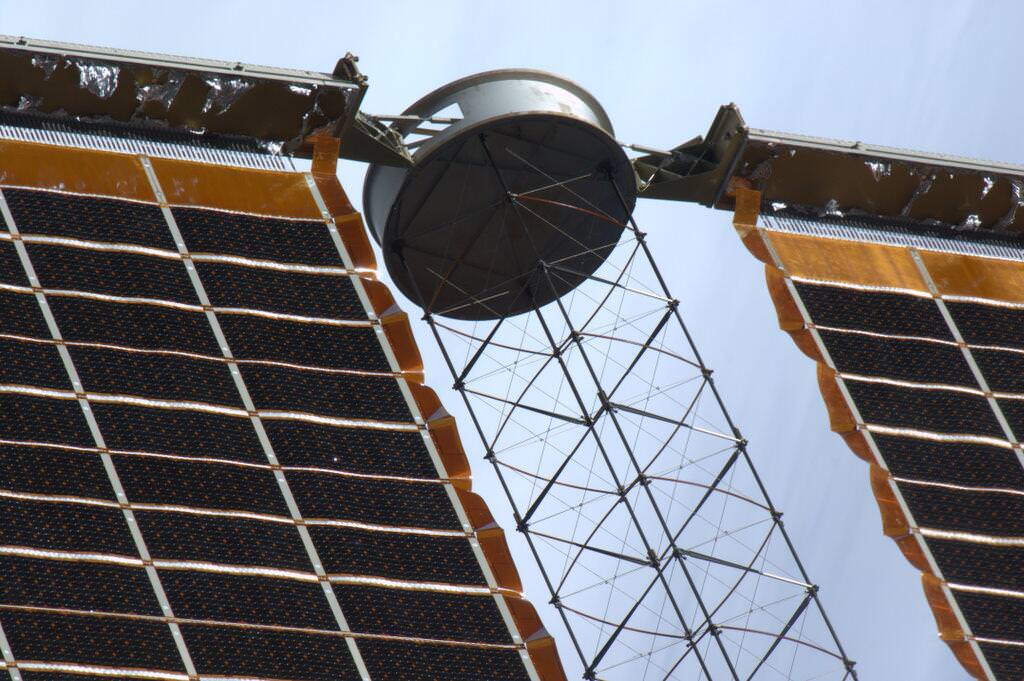The Universe often puts on a good show for us down here on Earth but one of the best spectacles must be a meteor shower. We see them when particles, usually the remains of comets, fall through our atmosphere and cause the atmosphere to glow. We see them as a fast moving streak of light but a new paper has suggested that the meteor showers we see can explain the sizes of the particles that originally formed the comet from where they came.
Continue reading “Explaining Different Kinds of Meteor Showers. It’s the Way the Comet Crumbles”Can Meteor Showers Be Dangerous to Spacecraft?
We’ve all read the advice, during a meteor shower there is no equipment needed. All you need to do is lay back and wonder at one of the most spectacular sights the universe has to offer. That’s about it though and while you lay back on a lounger and watch it really can be a wonderfully grounding and relaxing experience. Unless you happen to be on National TV and miss a meteor behind your head and just tell the world there’s nothing to see. Not that I’m bitter about that of course!
Continue reading “Can Meteor Showers Be Dangerous to Spacecraft?”The Moon Is Getting Slammed Way More Than We Thought

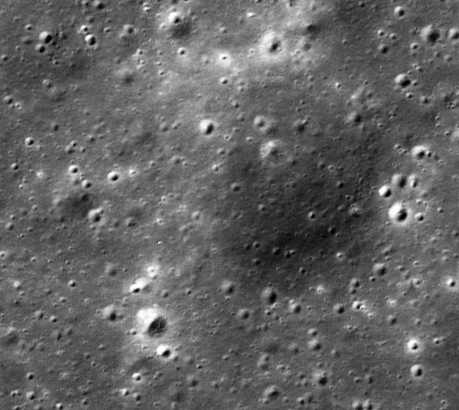
We often hear how the Moon’s appearance hasn’t changed in millions or even billions of years. While micrometeorites, cosmic rays and the solar wind slowly grind down lunar rocks, the Moon lacks erosional processes such as water, wind and lurching tectonic plates that can get the job done in a hurry.

Remember Buzz Aldrin’s photo of his boot print in the lunar regolith? It was thought the impression would last up to 2 million years. Now it seems that estimate may have to be revised based on photos taken by the Lunar Reconnaissance Orbiter (LRO) that reveal that impacts are transforming the surface much faster than previously thought.
![Distribution of new impact craters (yellow dots) discovered by analyzing 14,000 NAC temporal pairs. The two red dots mark the location of the 17 March 2013 and the 11 September 2013 impacts that were recorded by Earth-based video monitoring [NASA/GSFC/Arizona State University]](https://www.universetoday.com/wp-content/uploads/2016/10/Moon-new-crater-distribution-NASA-GSFC-ASU-1024x367.jpg)
By analyzing the number of new craters and their size, and the time between each temporal pair, a team of scientists from Arizona State University and Cornell estimated the current cratering rate on the Moon. The result, published in Nature this week, was unexpected: 33% more new craters with diameters of at least 30 feet (10 meters) were found than anticipated by previous cratering models.

Similar to the crater that appeared on March 17, 2013 (above), the team also found that new impacts are surrounded by light and dark reflectance patterns related to material ejected during crater formation. Many of the larger impact craters show up to four distinct bright or dark reflectance zones. Nearest to the impact site, there are usually zone of both high and low reflectance. These two zones likely formed as a layer of material that was ejected from the crater during the impact shot outward to about 2½ crater diameters from the rim.

From analyzing multiple impact sites, far flung ejecta patterns wrap around small obstacles like hills and crater rims, indicating the material was traveling nearly parallel to the ground. This kind of path is only possible if the material was ejected at very high speed around 10 miles per second or 36,000 miles per hour! The jet contains vaporized and molten rock that disturb the upper layer of lunar regolith, modifying its reflectance properties.
How LRO creates temporal pairs and scientists use them to discover changes on the moon’s surface.
In addition to discovering impact craters and their fascinating ejecta patterns, the scientists also observed a large number of small surface changes they call ‘splotches’ most likely caused by small, secondary impacts. Dense clusters of these splotches are found around new impact sites suggesting they may be secondary surface changes caused by material thrown out from a nearby primary impact. From 14,000 temporal pairs, the group identified over 47,000 splotches so far.
![Example of a low reflectance (top) and high reflectance (bottom) splotch created either by a small impactor or more likely from secondary ejecta. In either case, the top few centimeters of the regolith (soil) was churned [NASA/GSFC/Arizona State University].](https://www.universetoday.com/wp-content/uploads/2016/10/Moon-craters-splotches-NASA.gif)
What Is The Difference Between Asteroids and Meteorites?
Asteroids, meteors, and meteorites … It might be fair to say these rocks from space inspire both wonder and fear among us Earthlings. But knowing a bit more about each of them and how they differ may eliminate some potential misgivings. While all these rocks originate from space, they have different names depending their location — i.e. whether they are hurtling through space or hurtling through the atmosphere and impacting Earth’s surface.
In simplest terms here are the definitions:
Asteroid: a large rocky body in space, in orbit around the Sun.
Meteoroid: much smaller rocks or particles in orbit around the Sun.
Meteor: If a meteoroid enters the Earth’s atmosphere and vaporizes, it becomes a meteor, which is often called a shooting star.
Meteorite: If a small asteroid or large meteoroid survives its fiery passage through the Earth’s atmosphere and lands on Earth’s surface, it is then called a meteorite.
Another related term is bolide, which is a very bright meteor that often explodes in the atmosphere. This can also be called a fireball.
Let’s look at each in more detail:
Asteroids

Asteroids are found mainly in the asteroid belt, between Mars and Jupiter. Sometimes their orbits get perturbed or altered and some asteroids end up coming closer to the Sun, and therefore closer to Earth. In addition to the asteroid belt, however, there have been recent discussions among astronomers about the potential existence of large number asteroids in the Kuiper Belt and Oort Cloud. You can read a paper about this concept here, and a good article discussing the topic here.

Asteroids are sometimes referred to as minor planets or planetoids, but in general, they are rocky bodies that do not have an atmosphere. However, a few have their own moons. Our Solar System contains millions of asteroids, many of which are thought to be the shattered remnants of planetesimals – bodies within the young Sun’s solar nebula that never grew large enough to become planets.
The size of what classifies as an asteroid is not extremely well defined, as an asteroid can range from a few meters wide – like a boulder — to objects that are hundreds of kilometers in diameter. The largest asteroid is asteroid Ceres at about 952 km (592 miles) in diameter, and Ceres is so large that it is also categorized as a dwarf planet.
Most asteroids are made of rock, but as we explore and learn more about them we know that some are composed of metal, mostly nickel and iron. According to NASA, a small portion of the asteroid population may be burned-out comets whose ices have evaporated away and been blown off into space. Recently, astronomers have discovered some asteroids that mimic comets in that gas and dust are emanating from them, and as we mentioned earlier, there appears to be a large number of bodies with asteroid-like compositions but comet-like orbits.
How Often Do Asteroids Hit Earth?

While we know that some asteroids pass very close to Earth’s orbit around the Sun, we’ve been lucky in the history of humanity that we haven’t had a large asteroid hit Earth in the past several thousand years. It wasn’t until satellite imagery of Earth became widely available that scientists were able to see evidence of past asteroid impacts.
One of the more famous impact craters on Earth is Meteor Crater in Arizona in the US, which was made by an impact about 50,000 years ago. But there are about 175 known impact around the world – a few are quite large, like Vredefort Crater in South Africa which has an estimated radius of 190 kilometers (118 miles), making it the world’s largest known impact structure on Earth. Another notable impact site is off the coast of the Yucatan Peninsula in Mexico, and is believed to be a record of the event that led to the extinction of the dinosaurs 65 million years ago. You can see images of some of the most impressive Earth impact craters here.
These days, asteroid impacts are less of a threat. NASA estimates that about once a year an automobile-sized asteroid enters Earth’s atmosphere, creates an impressive fireball and disintegrates before ever reaching the surface. Studies of Earth’s history indicate that about once every 5,000 years or so on average an object the size of a football field hits Earth and causes significant damage. Once every few million years on average an object large enough to cause regional or global disaster impacts Earth. You can find more information about the frequency of impacts in this article from NASA.
Meteors, Meteoroids and Bolides

Space debris smaller than an asteroid are called meteoroids. A meteoroid is a piece of interplanetary matter that is smaller than an asteroid and frequently are only millimeters in size. Most meteoroids that enter the Earth’s atmosphere are so small that they vaporize completely and never reach the planet’s surface. When they burn up during their descent, they create a beautiful trail of light known as a meteor, sometimes called a shooting star.
Mostly these are harmless, but larger meteors that explode in the atmosphere – sometimes called bolides — can create shockwaves, which can cause problems. In February 2013 a meteor that exploded over Chelyabinsk, Russia shattered windows with its air blast. This meteoroid or bolide was estimated to be 18 meters (59 feet) in diameter. In 1908, a rocky meteoroid less than 100 meters in diameter is believed to have entered the atmosphere over the Tunguska region of Siberia in 1908 and the resulting shockwave knocked down trees for hundreds of square kilometers
How often is Earth hit by meteroids?
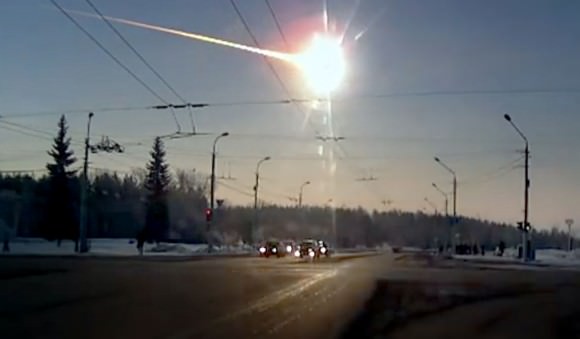
Because of the Chelyabinsk meteor in 2013, astronomers have acquired more information about the frequency of larger meteors that hit Earth, and there is now a growing consensus that the Earth gets hit by bigger space rocks more often than we previously thought. You can read more about that concept here.
This video from the B612 Foundation shows a visualization of the location of 26 space rocks that hit Earth between 2000 and 2013, each releasing energy equivalent to some of our most powerful nuclear weapons. The B612 foundation says that a Hiroshima-scale asteroid explosion happens in our atmosphere on average once a year, but many are not detected because they explode high in the atmosphere, or because most of the Earth’s surface is water and even a large percentage of land is fairly uninhabited by humans.
Estimates vary of how much cosmic dust and meteors enter Earth’s atmosphere each day, but range anywhere from 5 to 300 metric tons. Satellite observations suggest that 100-300 metric tons of cosmic dust enter the atmosphere each day. This figure comes from the rate of accumulation in polar ice cores and deep-sea sediments of rare elements linked to cosmic dust, such as iridium and osmium.
But other measurements – which includes meteor radar observations, laser observations and measurements by high altitude aircraft — indicate that the input could be as low as 5 metric ton per day. Read more about this here.
For a documented list of bolide events, you can check out this page from JPL.
Meteorite
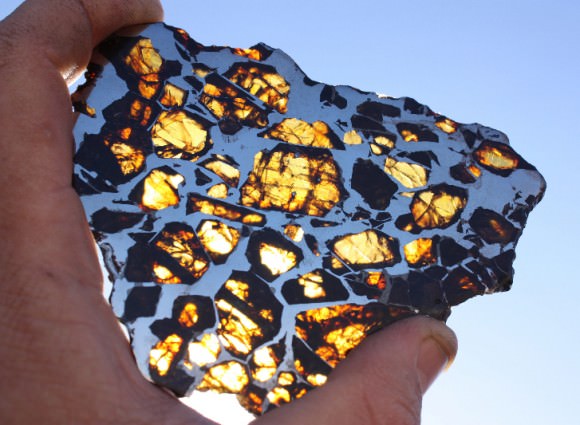
If any part of a meteoroid survives the fall through the atmosphere and lands on Earth, it is called a meteorite. Although the vast majority of meteorites are very small, their size can range from about a fraction of a gram (the size of a pebble) to 100 kilograms (220 lbs) or more (the size of a huge, life-destroying boulder). Meteorites smaller than 2mm are classified as micrometeorites.
Meteorites have traditionally been divided into three broad categories, depending on their structure, chemical and isotopic composition and mineralogy. Stony meteorites are rocks, mainly composed of silicate minerals; iron meteorites that are largely composed of metallic iron-nickel; and, stony-iron meteorites that contain large amounts of both metallic and rocky material.
Meteorites have also been found on the Moon and Mars and conversely, scientists have traced the origination of the meteorites found here on Earth to four other bodies: the Moon, Mars, the asteroid 4 Vesta, and the comet Wild 2. Meteorites are the source of a great deal of the knowledge that we have have about the composition of other celestial bodies.
How Often Do Meteorites Hit Earth?

According to the Planetary Science Institute, it is estimated that probably 500 meteorites reach the surface of the Earth each year, but less than 10 are recovered. This is because most fall into water (oceans, seas or lakes) or land in remote areas of the Earth that are not accessible, or are just not seen to fall.
You can read more about meteorites that were found from the Chelyabinsk meteor here.
Summary
In short, the difference between asteroids and meteors all comes down to a question of location. Asteroids are always found in space. Once it enters an atmosphere, it becomes a meteor, and then a meteorite after it hits the ground. Each are made of the same basic materials – minerals and rock – and each originated in space. The main difference is where they are when they are being observed.
We have many great articles on the subject of asteroids and meteorites here at Universe Today, such as this general information article on asteroids, this article and infographic about the difference between comets, asteroids and meteors, and these articles that deal with Ceres and Vesta. And here are some recent articles about the Chelyabinsk meteor that landed in Russia, as well as a 2 billion-year old Martian meteorite that contains evidence of water on Mars.
There is some good information on a NASA page as well as some great information here on Universe Today and Astronomy Cast.
Sources:
JPL’s Near Earth Asteroid Office
Planetary Science Institute
NASA: Asteroids
NASA: Meteors
This Is The Asteroid That Didn’t Hit Us
All right, sure – there are a lot of asteroids that don’t hit us. And of course quite a few that do… Earth is impacted by around 100 tons of space debris every day (although that oft-stated estimate is still being researched.) But on March 10, 2015, a 12–28 meter asteroid dubbed 2015 ET cosmically “just missed us,” zipping past Earth at 0.3 lunar distances – 115,200 kilometers, or 71, 580 miles.*
The video above shows the passage of 2015 ET across the sky on the night of March 11–12, tracked on camera from the Crni Vrh Observatory in Slovenia. It’s a time-lapse video (the time is noted along the bottom) so the effect is really neat to watch the asteroid “racing along” in front of the stars… but then, it was traveling a relative 12.4 km/second!
UPDATE 3/14: As it turns out the object in the video above is not 2015 ET; it is a still-undesignated NEO. (My original source had noted this incorrectly as well.) Regardless, it was an almost equally close pass not 24 hours after 2015 ET’s! Double tap. (ht to Gerald in the comments.) UPDATE #2: The designation for the object above is now 2015 EO6.
Flaming Space Junk Makes Jaws Drop in Australia
“It first looked like a plane with fire coming out of the tail.” — Aaron O.
“I have never seen anything like it. Big, bright and moving gently across sky – slower than a plane, not falling at all but moving across.” — Shannon H.
“Viewed from cockpit of aircraft at 37,000′. Was visible for two or three minutes.” — Landy T.
Flaming plane? Incandescent visitor from the asteroid belt? As the these comments from the AMS Fireball Log attest, the brilliant and s-l-o-w fireball that seared the sky over southeastern Australia tonight was probably one of the most spectacular displays of re-entering space junk witnessed in recent years.
Ted Molczan, citizen satellite tracker and frequent contributor to the amateur satellite watchers SeeSat-L site, notes that the timing and appearance almost certainly point to the decay or de-orbiting of the Russian Soyuz 2-1B rocket booster that launched the meteorological satellite Meteor M2 on July 8.
Meteor over New South Wales. Look closely near the end and you’ll see it disintegrate into small pieces.
The magnificent man-made meteor, weighing some 4,400 pounds (2,000 kg), was seen from Melbourne to Sydney across the states of Victoria and New South Wales around 10 p.m. Hundreds of people were stopped in their tracks. Most noticed how slowly the fireball traveled and how long it continue to burn on the way down.
Spacecraft that reenter from either orbital decay or controlled entry usually break up at altitudes between 45-52 miles (84-72 km) traveling around 17,500 mph (28,000 km/hour) . Compression and friction from the ever-thickening air cause the craft, or in this case, the rocket booster, to slow down and heat up to flaming incandescence just like a hunk of space rock arriving from the asteroid belt. In both cases, we see a brilliant meteor, however manmade debris.

Occasional meteoroids break apart in the atmosphere and scatter meteorites just as pieces of occasional satellites, especially large, heavy craft, can survive the plunge and land intact – if a tad toasted. Whether anything remains of Russian rocket stage or where exactly it fell is still unknown. Here are a few more photos of successful space junk arrivals.

Reportedly, only one person has been struck by satellite debris. In 1997 Lottie Williams of Tulsa, Oklahoma was hit on the shoulder while walking by a small, twisted piece of metal weighing as much as a crushed soda can. It was traced back to the tank of a Delta II rocket that launched a satellite in 1996. I suppose it’s only a matter of time before someone else gets hit, but the odds aren’t great. More likely, you’ll see what alarmed and delighted so many southeastern Australians Thursday night: a grand show of disintegration.
Warning Shot: a “Bullet Hole” on the ISS
Canadian astronaut and Expedition 35 commander Chris Hadfield just shared this photo on Twitter, showing a portion of one of the solar array wings on the ISS… with a small but very visible hole made by a passing meteoroid in one of the cells.
In typical poetic fashion, Commander Hadfield referred to the offending object as “a small stone from the universe.”
“Glad it missed the hull,” he added.

While likened to a bullet hole, whatever struck the solar panel was actually traveling much faster when it hit. Most bullets travel at a velocity of around 1,000-2,000 mph (although usually described in feet per second) but meteoroids are traveling through space at speeds of well over 25,000 mph — many times faster than any bullet!
Luckily the ISS has a multi-layered hull consisting of layers of different materials (depending on where the sections were built), providing protection from micrometeorite impacts. If an object were to hit an inhabited section of the Station, it would be slowed down enough by the different layers to either not make it to the main hull or else merely create an audible “ping.”
Unnerving, yes, but at least harmless. Still, it’s a reminder that the Solar System is still very much a shooting gallery and our spacefaring safety relies on the use of technology to protect ourselves.
Image: NASA / Chris Hadfield
Fact: The 110 kilowatts of power for the ISS is supplied by an acre of solar panels!



